The genus Pennisetum comprises about 80 species, mostly perennial, from sub-tropical and warm temperate regions of the world. Many pennisetum are highly ornamental grasses, and for the most part, clump-forming (a few are rhizomatous), with neat tussocks of arching foliage from which numerous fountains of plume-like inflorescences emerge from mid- to late summer. The pennisetum seedheads persist throughout the winter and the sere foliage can be an asset during the colder months when brown becomes more valuable in the garden.
Pennisetum in brief
What Flowering grasses, with long, bristly plumes from mid- to late summer. Origins Asia, Africa and into Southern Pacific regions. Found in both warm temperate and sub-tropical zones. Season Most pennisetums flower from midsummer into the autumn, and some continue to hold themselves together into winter. Hardiness Many are hardy in all but the coldest parts of the UK, and some are tender perennials. All do best in a warm summer. Most have an RHS hardiness rating of H3 (hardy to temperatures of -5-1ºC) and, depending on species, are suitable for gardens in USDA zones 6a to 10b.
With so many pennisetums now on offer, we can fully recognise their terrific garden potential. When planting pennisetum, consider how to bring out the best of the plant, either by planting in drifts, or, if your chosen species or cultivar is bold enough, leaving it to stand on its own. The lovely flowers and foliage combine well with late-summer perennials, such as asters or Helianthus.
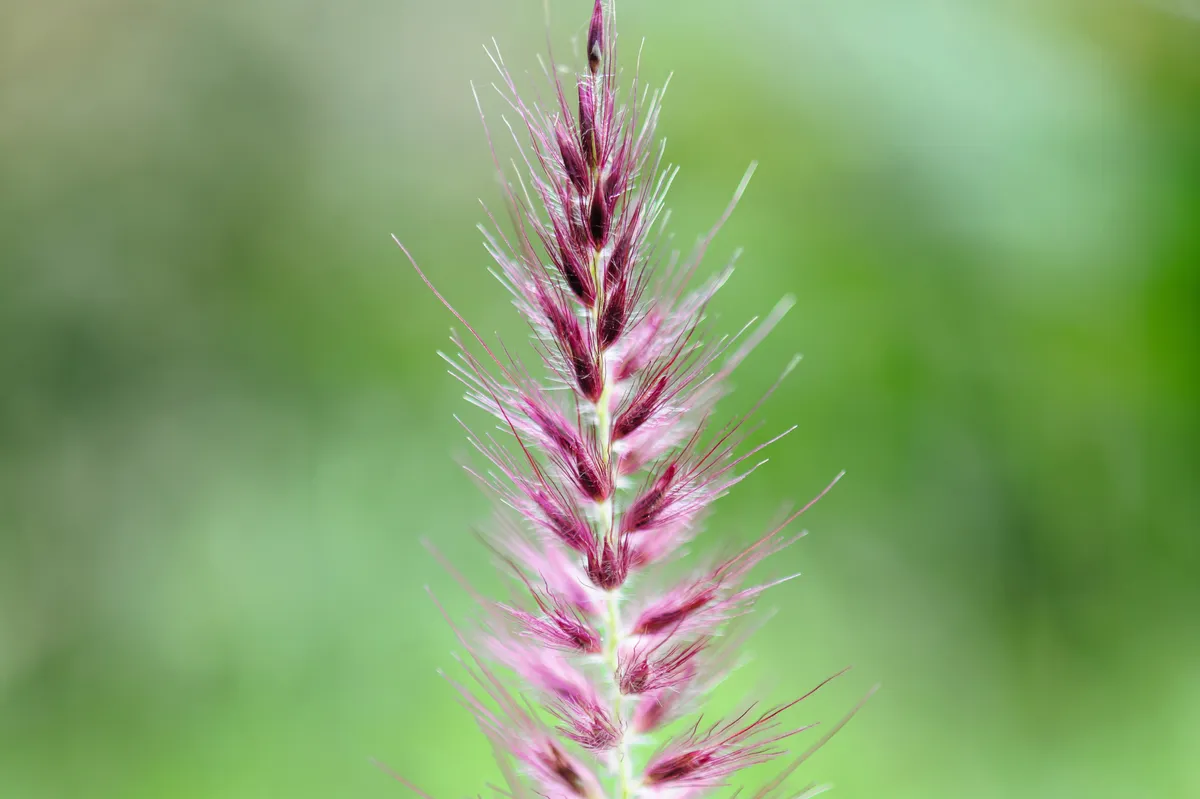
How tall does pennisetum grow?
Small, versatile pennisetums are about 40cm tall, while larger forms grow to over 1.5m. The warmer the climate/season, the taller and larger the plants. The shorter species are particularly well suited for the front of the border. The foliage remains smart from head to toe and acts as a useful screen when placed in front of taller perennials, such as phlox, the lower leaves of which often become ragged as the season progresses.
When to cut back pennisetum
Pennisetum leaves and foliage looks lovely even over winter, so leave it til spring when you can cut back dried leaves o roughly 8 inches from ground level.
How to grow pennisetum
Although there are many new cultivars of pennisetum that are suitable for the cooler summers in northern parts of the UK, they still require a warm spot. Seek out a sunny, south-facing position, or even a sheltered location in a sun trap. Pennisetums will also be thankful for an extra boost of radiant heat provided by a wall or stone path. Most pennisetums need a temperate climate with warm summers. Although some can take drought when established, the Asian species do best in warm, moist soils that don’t sit wet in the winter.
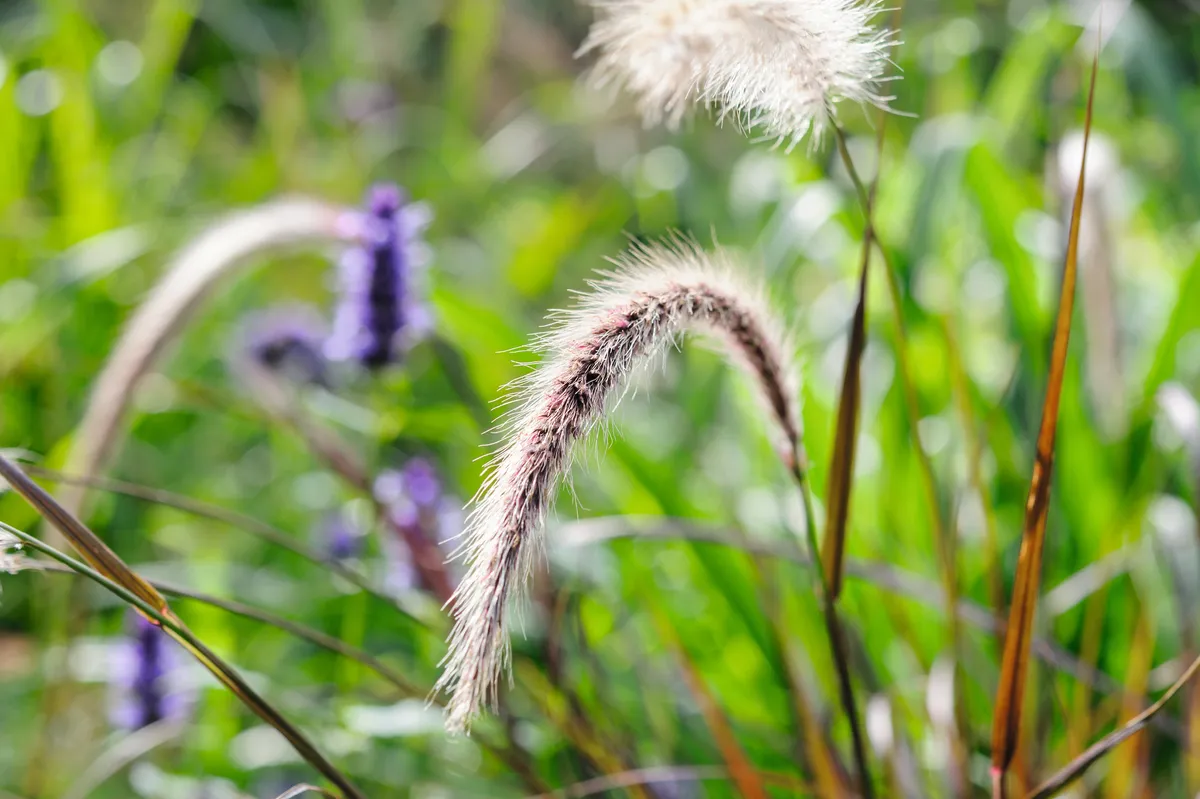
When to plant pennisetum
Aim to plant pennisetums in late spring when the soil is warming up (a general rule true for most grasses). Avoid planting in autumn – it will be the death of the plants if you do so.
How to plant pennisetum
On planting, improve the soil by adding a slug of rich compost, mix thoroughly with the existing soil, and add grit if the site has a tendency to sit wet. In very wet gardens, plant pennisetums next to a path, or a wall where the drainage is particularly sharp. Firm the soil around the plant to prevent wind-rock and to aid drainage.
How to care for pennisetum
In the right position, pennisetums are fairly trouble-free. Young plants should be given space to breathe and competition should be controlled until the plants are established and more robust. Water the plants in dry periods until they are well rooted. They respond badly to root disturbance, so when digging plants out of a border, minimise disruption by retaining an ample root ball.
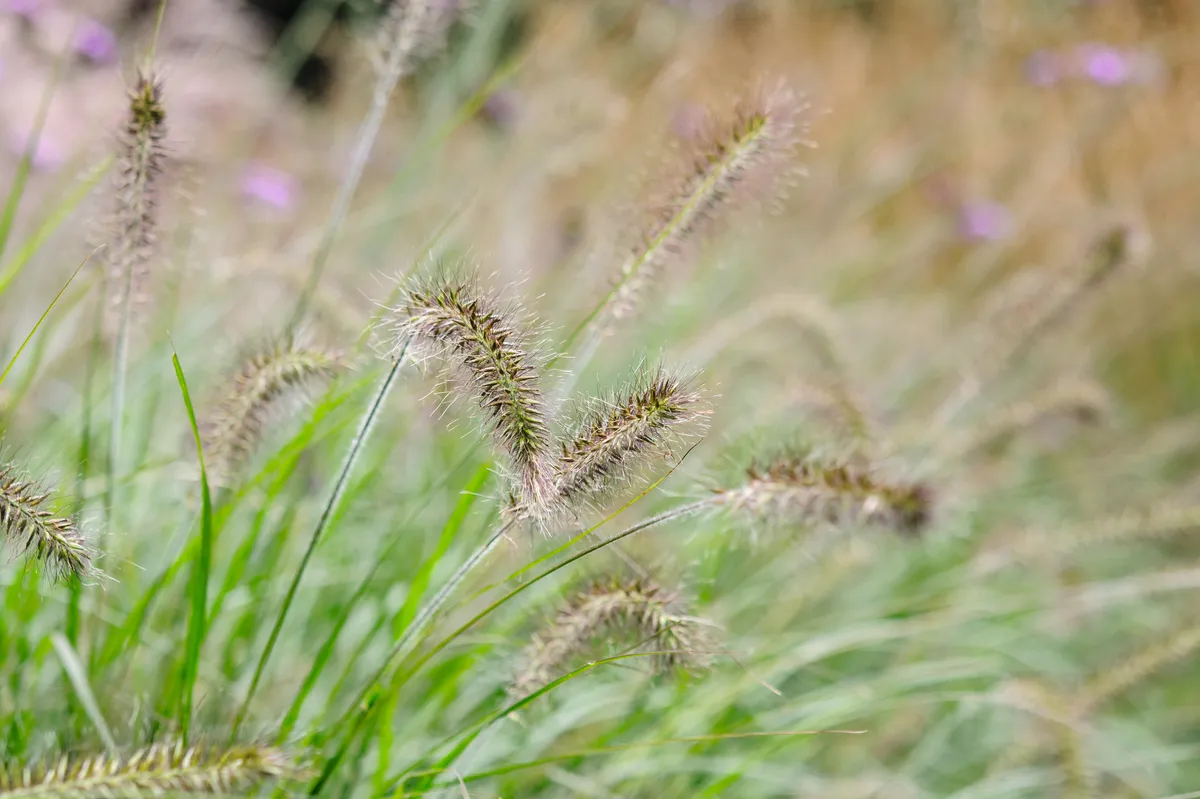
Pennisetum in pots
The quick-growing, tender species and cultivars should be given lots of sustenance and potted on regularly if grown in containers. Tender species and cultivars should be brought into a warm greenhouse or conservatory in autumn. Place the plant in a pot that closely matches the size of the root ball and provide heat. Plants will invariably suffer some dieback, which should be gently removed, but if you can keep them going, plants should recover quickly in spring.
Propagating pennisetum
Most species can be easily propagated from seed, and fresh seed will germinate quickly. Seedlings should be left to bulk up in their trays before moving them on into larger pots. Grasses should be potted on during the warmer months when they are growing. Plants generally don’t produce roots to a significant degree during the winter months, leaving them susceptible to rot if the compost is too wet. The same guidelines apply to vegetative propagation: splitting clumps should be done in spring. Discard any old, woody parts, and keep the young, outer part of the clump. The divided portions destined for the garden should be kept to approximately 15-20cm across. Any smaller pieces can be potted on.
Below you'll find some of the best pennisetum's to grow, chosen by head gardener Matthew Reese.
Pennisetum: the best pennistum to grow
Pennisetum orientale ‘Tall Tails’
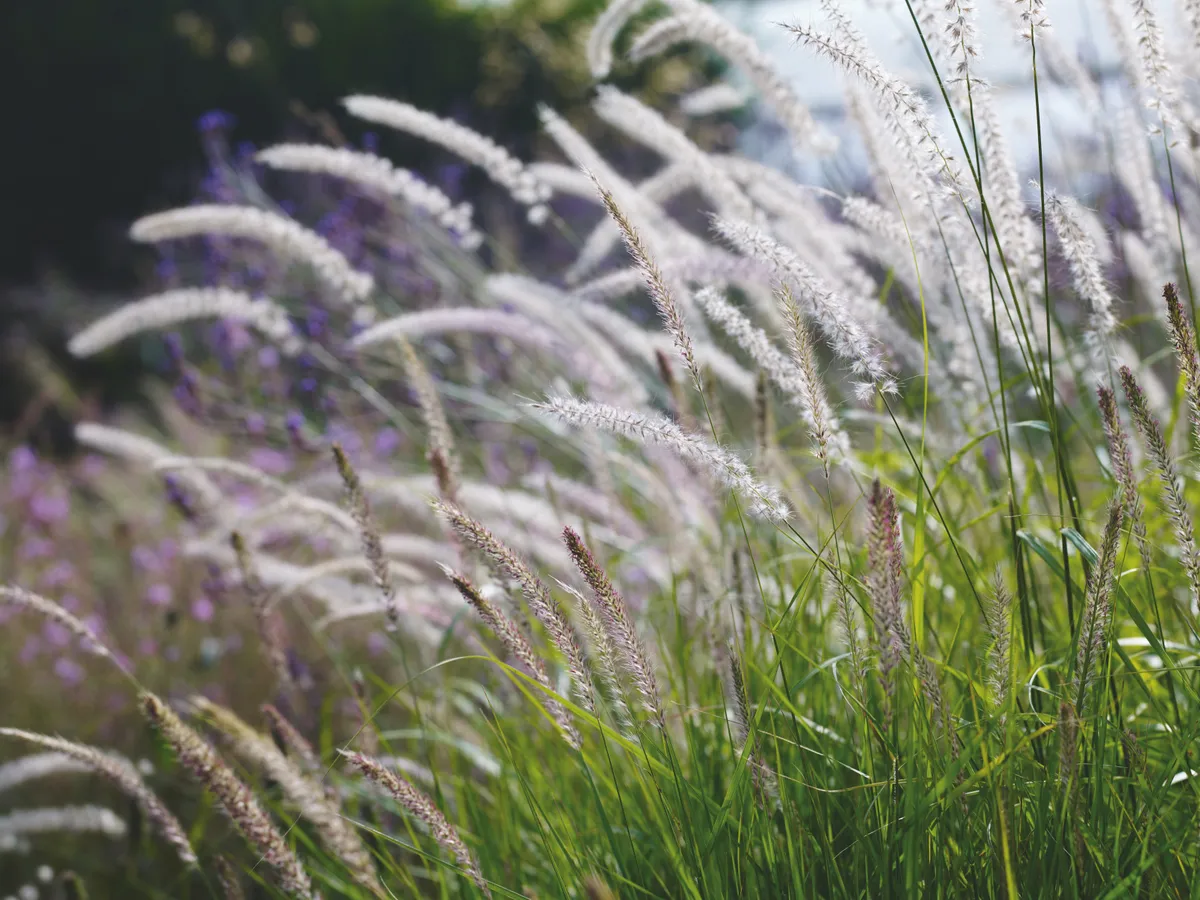
Taller and more imposing than the type species, Pennisetum orientale 'Tall Tails' can be used as a focal point or en masse in a border, or planted in a pot. This pennisetum produces long, buff, catkin-like plumes with a hint of pink in late summer. Loose habit. It loves drained soil in full sun. A pennisetum that may need protecting from frost during the winter and can also be used in pots. Height 1.4m. Hardiness rating USDA 5a-8b.
SQUIRREL_13081787
Pennisetum ‘Fairy Tails’
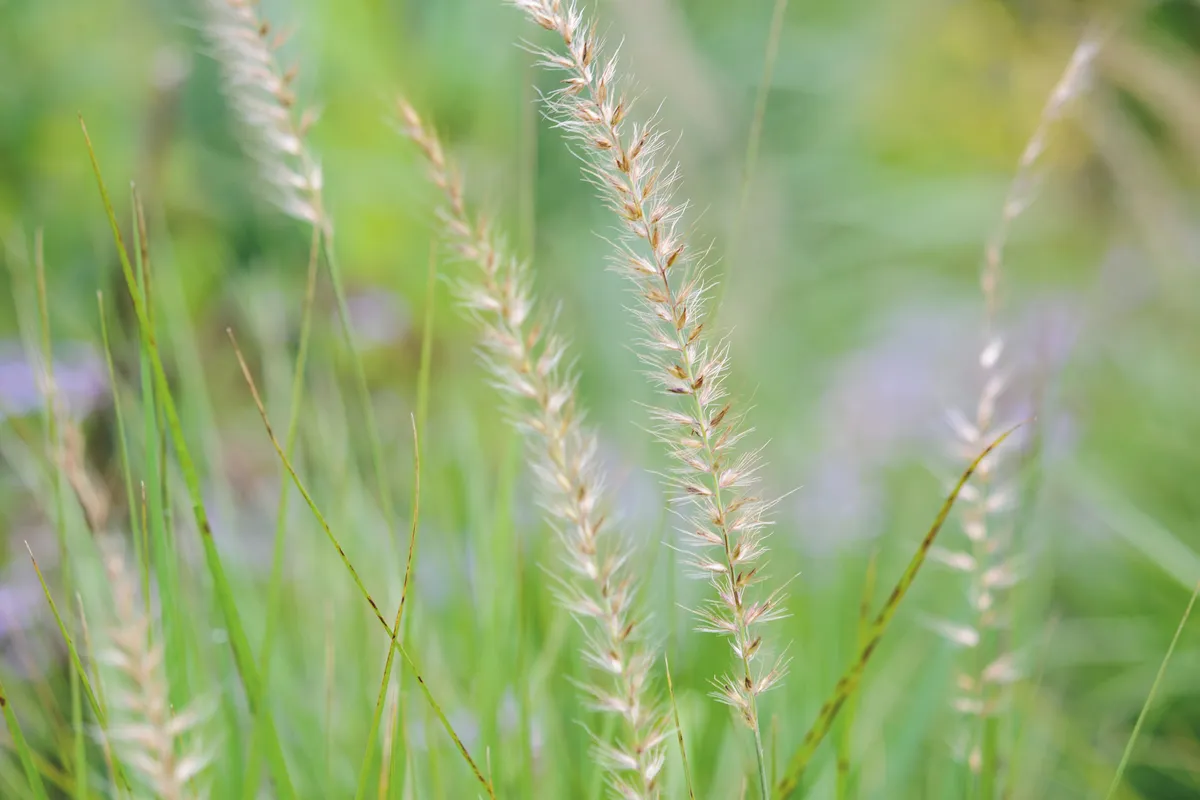
A pennisetum hybrid with an upright habit that flowers from early summer onwards. Copious, airy, bottlebrush flowers of faded-pink age to gold-grey. Leave for winter effect and tidy in the spring. It can be a perennial, annual or evergreen and likes shelter as well as full sun and well drained soil. The flowers are also very soft, so this pennisetum is a nice option for a sensory garden. Height 90cm. Hardiness rating RHS H3.
SQUIRREL_13098512
Pennisetum orientale ‘Karley Rose’

A superb pennisetum that produces masses of silvery-pink flower spikes from July into autumn above a dense tussock of arching green leaves. Works well as a specimen or in groups. Suitable for cooler area, is very quick to establish and is hardier than most ornamental grasses. This grass needs well drained soil and full sun. Height 60cm. Hardiness rating RHS H3, USDA 5a-8b.
Pennisetum thunbergii ‘Red Buttons’
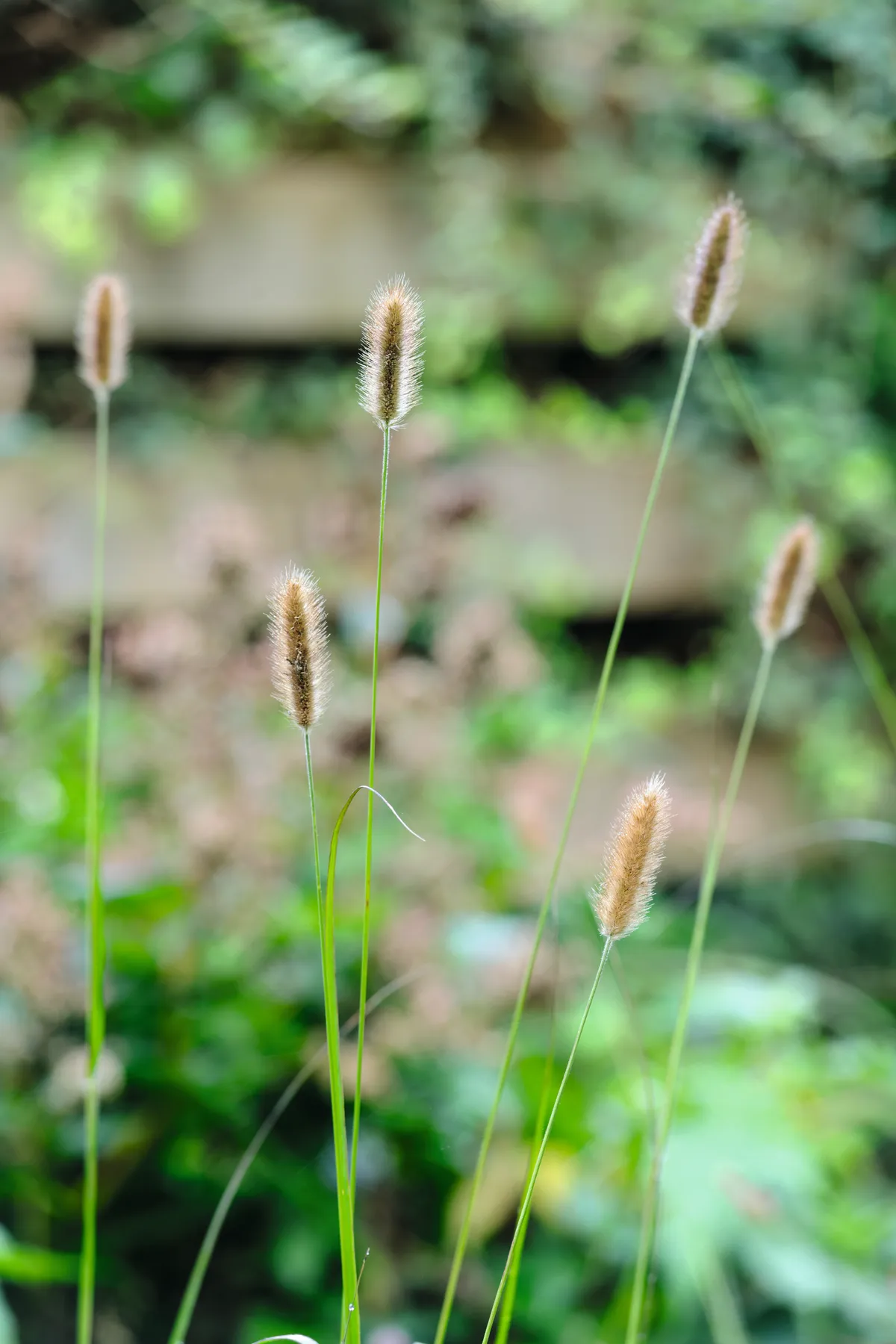
Hailing from the African savanna, this delicate, clump-forming pennisetum produces masses of small, dense flower spikes atop willowy stems. The pennisetum flowers age to pale brown in late summer but can be enjoyed throughout the season. Needs sharp drainage and a sheltered spot and really like hot, coastal gardens that are dry. Tidy in the spring and watch out for self seeding. Perfect for borders and small gardens too. Height 1m. Hardiness rating RHS H3.
SQUIRREL_13098527
Pennisetum macrourum
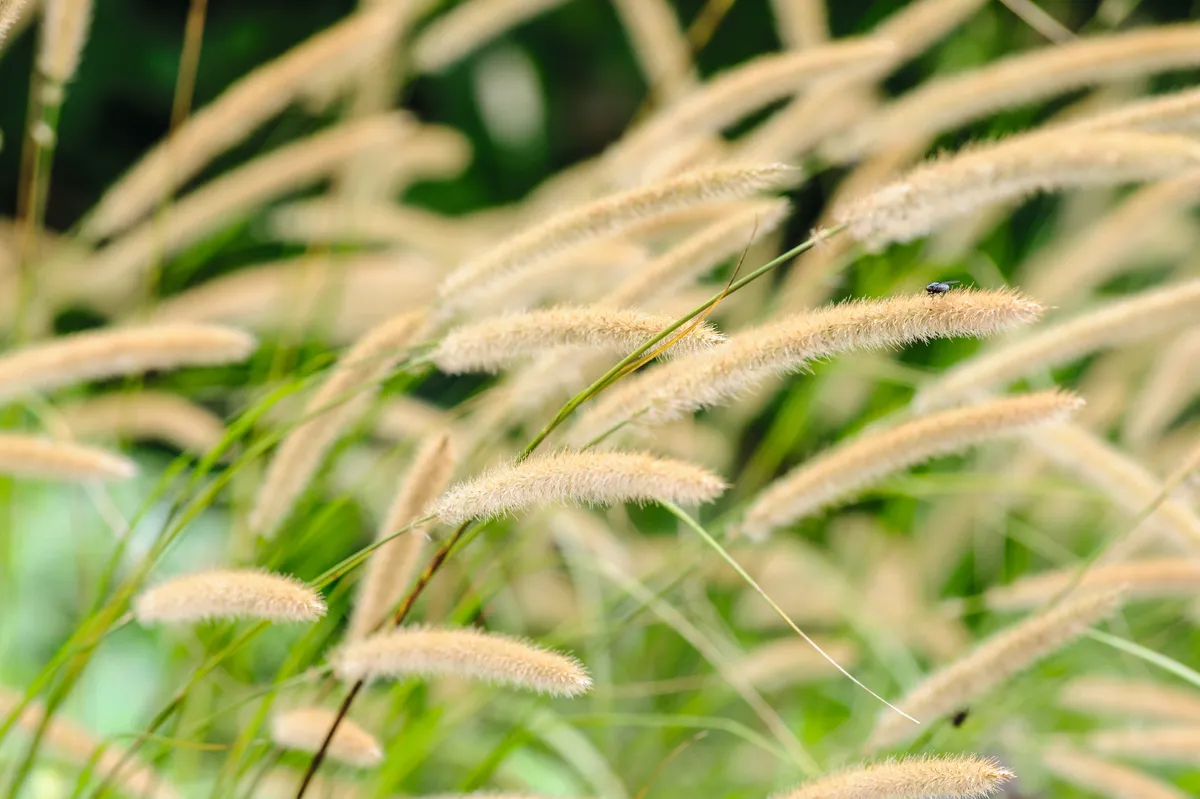
Initially makes an upright plant topped with soft and silky silvery-green flowerheads. As the season progresses, the pennisetum flowers age to brown and set seed, and the stems splay. The pennisetum has a mild running habit so keep watch of it and needs a sheltered position if grown in colder regions. Perfect for well drained soil in full sun. Height 1.2m. Hardiness rating RHS H3, USDA 8a-10b.
Pennisetum orientale ‘Shogun’
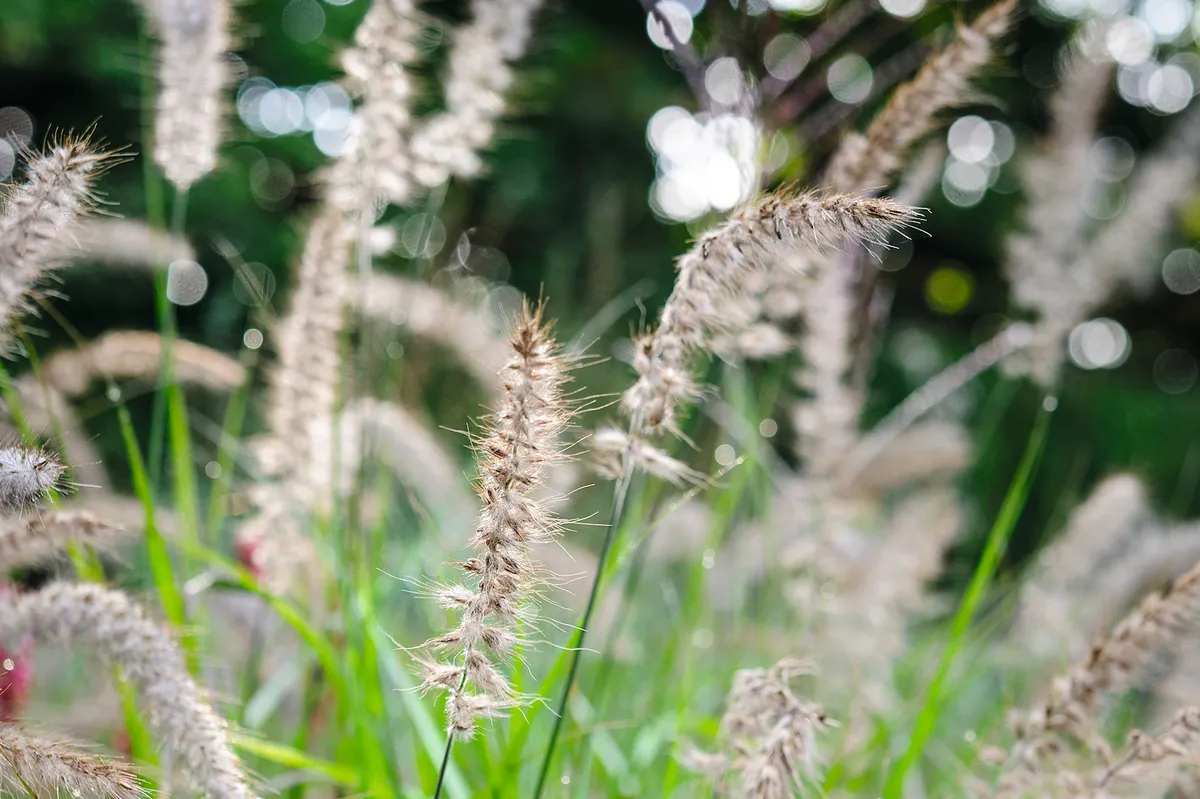
This reliable, vigorous cultivar produces mounds of arching, blue-green foliage and pink, bristly flower spikes from July into autumn. It's perfect for mixed borders and is also lovely in dried flower arrangements. Looking for plants for a gravel garden? This pennisetum would be perfect. Plant in full sun with good drainage. Cut the flower spikes for flower arrangements before they set seed. Height 1.2m. Hardiness rating RHS H3.
Pennisetum alopecuroides ‘Cassian’s Choice’
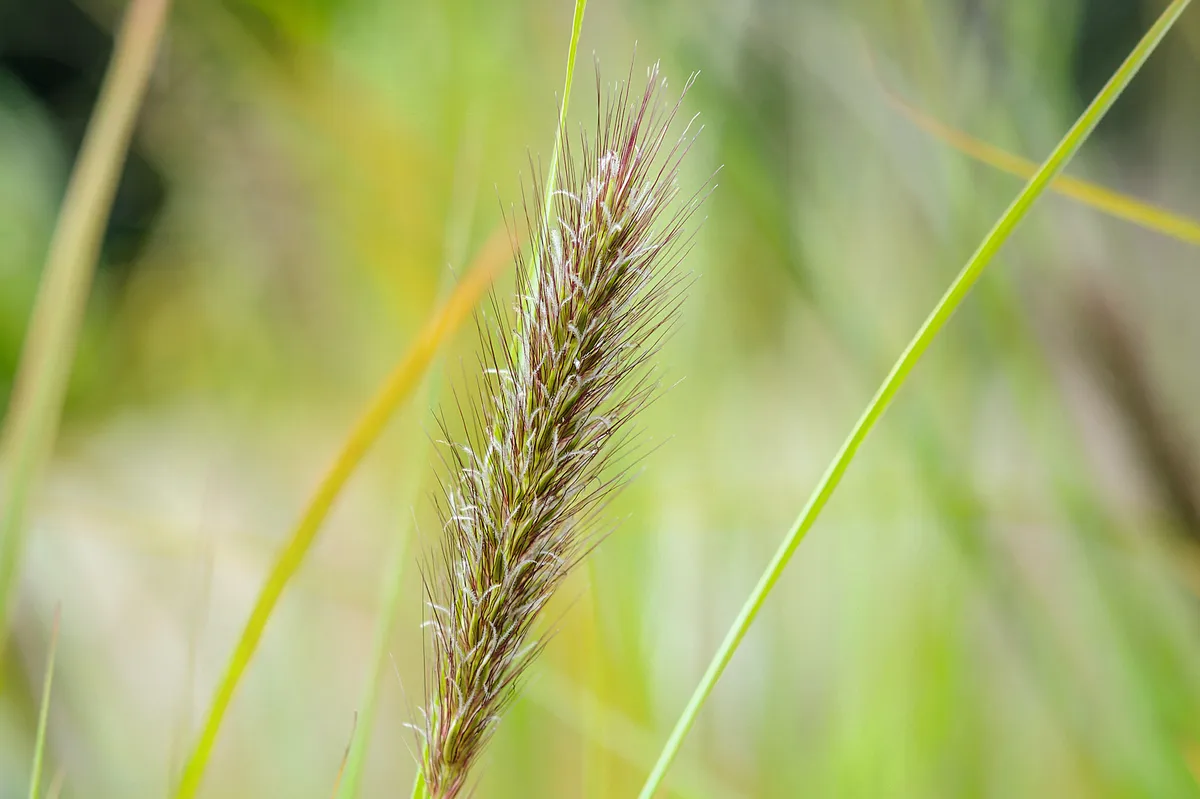
Named for the German horticulturist, Cassian Schmidt who focuses on natural plant communities as models for sustainable plant combinations, this pennisetum cultivar has bristly, dark flower spikes from August above mounds of fresh-green foliage. It will continue throughout autumn and well into winter. Height 1m. Hardiness rating USDA 5a-9b.
Pennisetum x advena ‘Rubrum’

Best treated as a tender perennial, this pennisetum cultivar has purple-red foliage and long, drooping flower spikes to match. Prefers rich, moist soil and is suitable for borders or pots. It grows quickly and doesn't need much looking after, apart from in autumn, when you should lift and protect from frost. Plant out in late May. Height 1.6m. Hardiness rating RHS H3.
Pennisetum alopecuroides ‘Dark Desire’
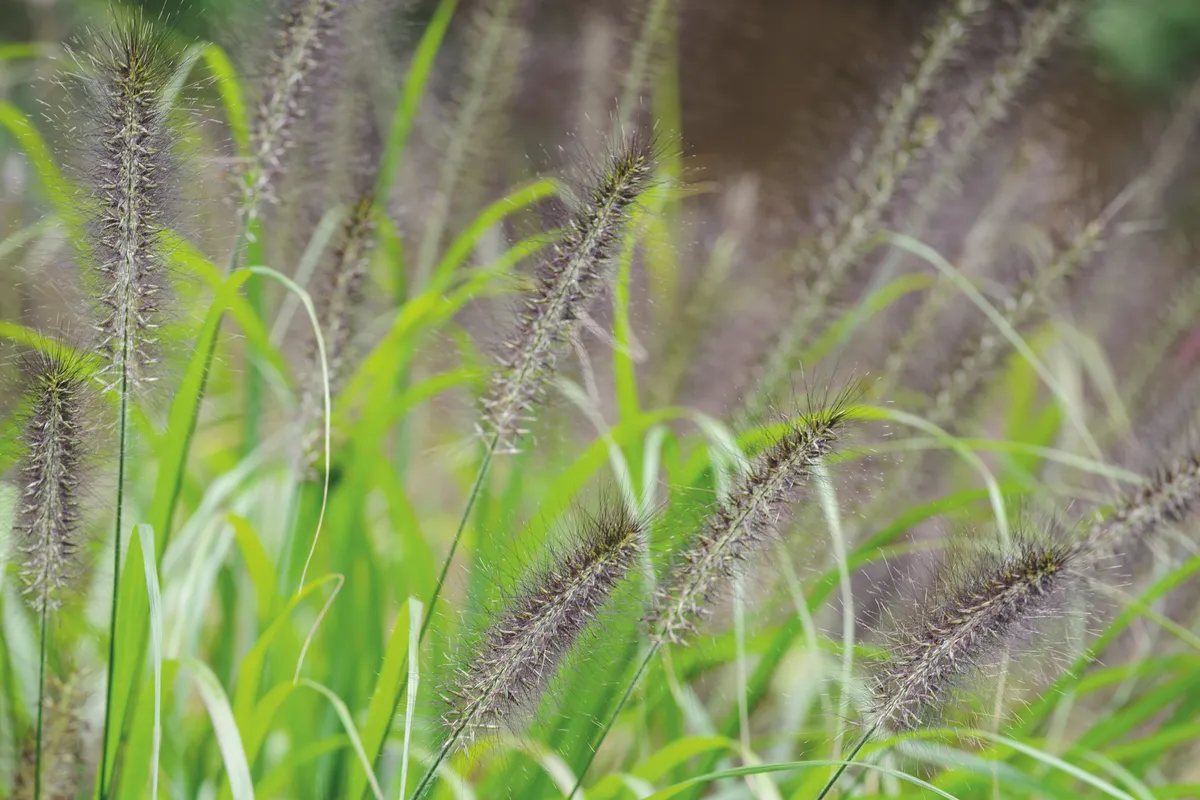
Red, whiskered flowers, above mounds of lush, dark foliage, darken with age. It looks sublime backlit in low autumn sunlight and prefers a sunny spot in good soil that doesn’t sit wet in winter. Flowers from July right through to the first frosts. Drought resistant and in need of full sun. Selected by Knoll Gardens in 2014. Height 1m.
Pennisetum villosum
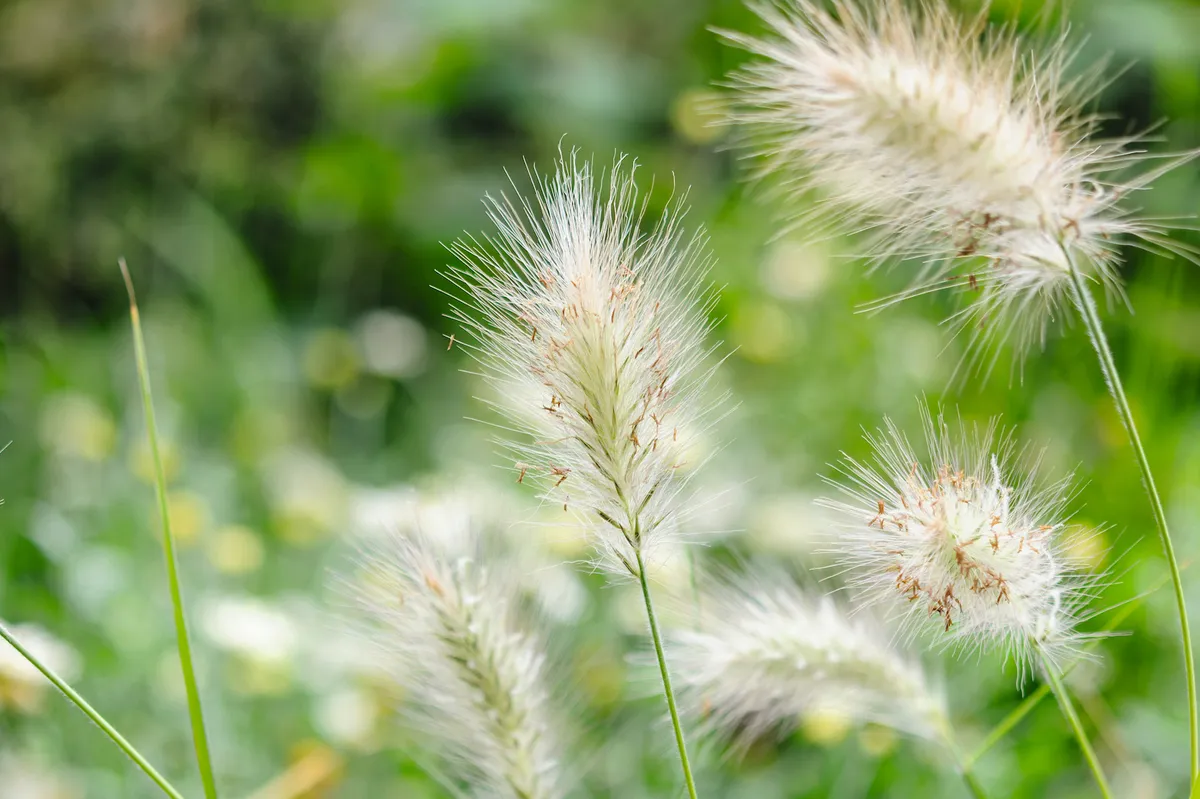
One of the finest pennisetum grasses for the front of the border, if a little messy. Arching stems bearing fluffy, silver flower spikes are produced from mid-August and persist into autumn. Plant in a hot, dry site, and only cut back in the spring. Good for flower arranging and watch out for it self seeding. Height 60cm. Hardiness rating RHS H3.
SQUIRREL_13098535
Pennisetum alopecuroides ‘Black Beauty’
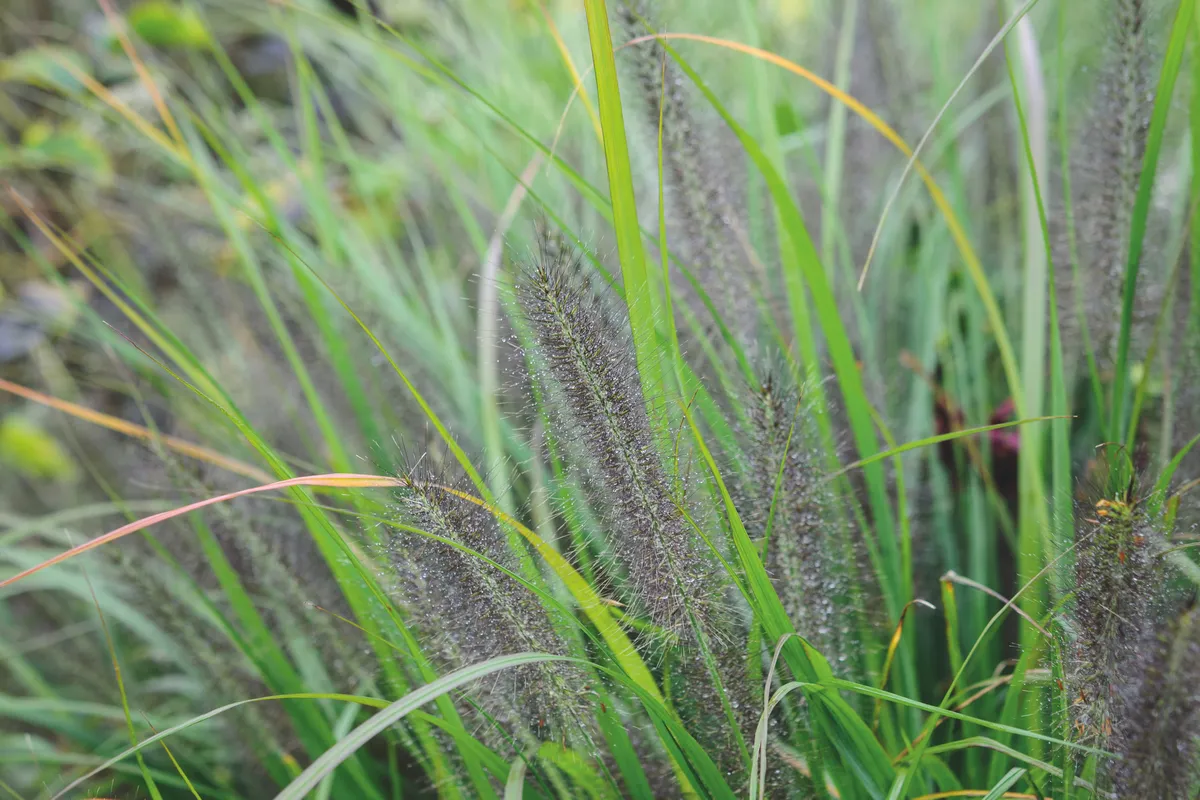
A striking, dark-flowered form, with long, cylindrical plumes that look wonderful backlit by the evening sun. It favours a moist, free-draining soil that is not too dry. Performs best in southern English counties in a warm, sheltered position. Height 90cm.
Pennisetum incomptum
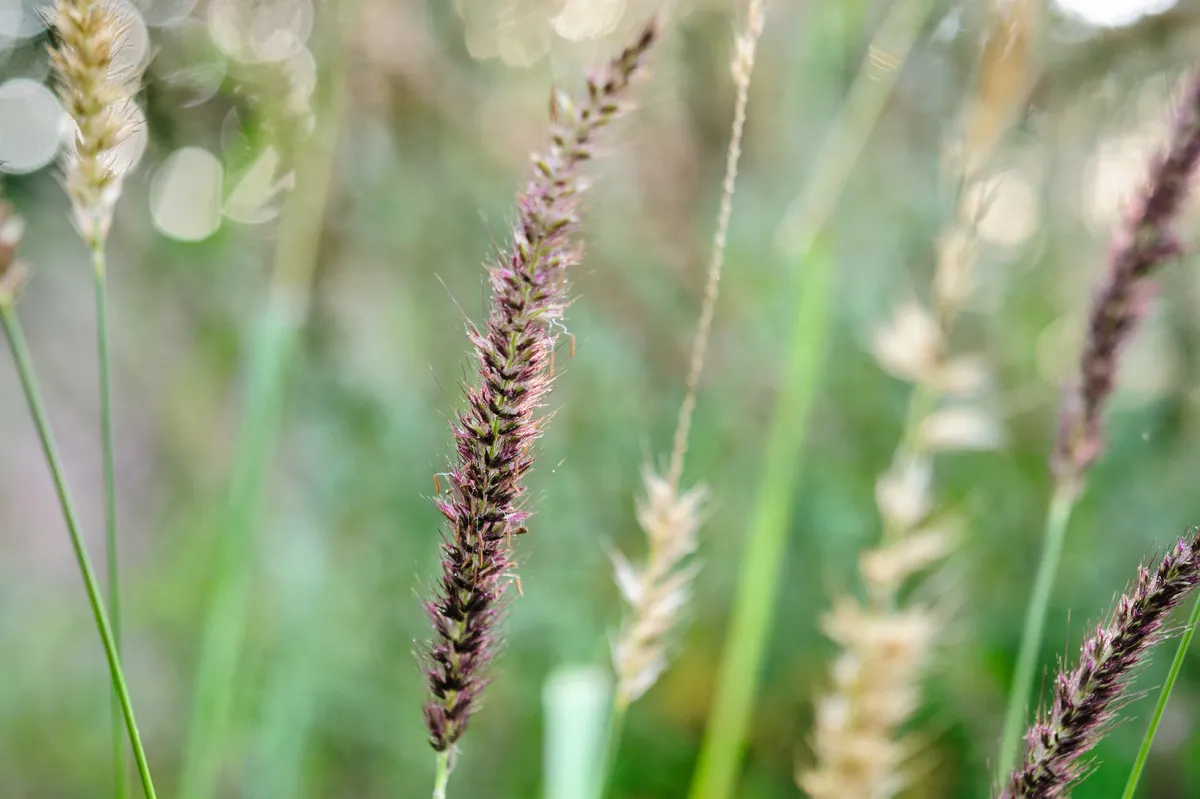
This pennisetum is an attractive, vigorous spreader, ideally confined to a container. If grown in the border, monitor it closely and use a root barrier to check its progress. This cultivar produces greenish-white flowers throughout the summer that fade to tan-brown with age. Height 1.2m.
Pennisetum alopecuroides ‘Hameln’

A compact form pennisetum that produces masses of curved, silver-green flower spikes atop arching, green foliage. It develops gold hues in autumn and will remain attractive through the winter. Remove old foliage in spring. Performs best in full sun. Height 90cm. Hardiness rating RHS H3, USDA 5a-9b.
Where to see and buy pennisetum ornamental grasses
Ashwood Nurseries
Ashwood Lower Lane, Kingswinford, West Midlands DY6 0AE.
Tel 01384 401996, ashwoodnurseries.com
Beth Chatto Gardens
Elmstead Market, Colchester, Essex CO7 7DB.
Tel 01206 822007, bethchatto.co.uk
Cotswold Garden Flowers
Sands Lane, Badsey, Worcestershire WR11 7EZ.
Tel 01386 833849, cgf.net
Dove Cottage Nursery
Shibden Hall Road, Halifax, West Yorkshire HX3 9XA.
Tel 01422 203553, dovecottagenursery.co.uk
Edulis
1 Flowers Piece, Ashampstead, Reading, Berkshire RG8 8SG.
Tel 01635 578113, edulis.co.uk
Hardy’s Cottage
Garden Plants, Priory Lane Nursery, Freefolk Priors, Whitchurch, Hampshire RG28 7FA.
Tel 01256 896533, hardysplants.co.uk
Knoll Gardens
Stapehill Road, Hampreston, Wimborne, Dorset BH21 7ND.
Tel 01202 873931, knollgardens.co.uk